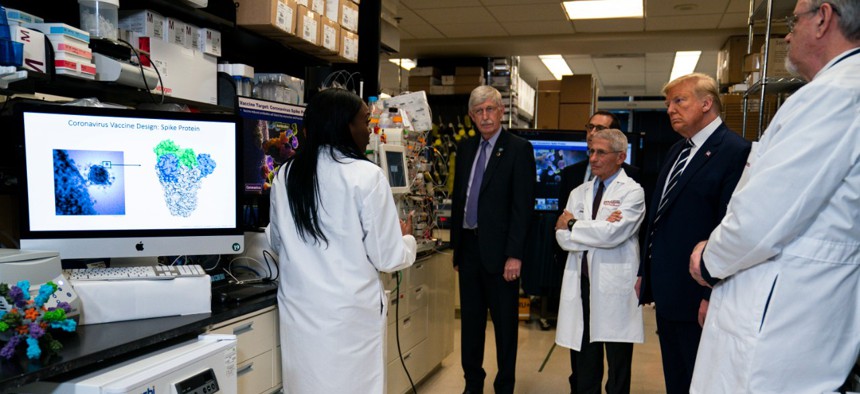HHS Has Yet to Use Four-Year-Old Authorities to Hire 2,000 Biomedical Researchers
The researchers could have helped CDC, FDA and NIH in coronavirus fight, watchdog says.
The Trump administration has not yet implemented a law passed in late 2016 to allow several agencies to hire biomedical researchers with special authority and boosted pay who could have assisted in the government’s response to the novel coronavirus outbreak.
The 21st Century Cures Act, enacted in December of 2016, provided an avenue for the National Institutes of Health, the Centers for Disease Control and Prevention, and the Food and Drug Administration to bring on an additional 1,500 scientists in biomedicine, bioinformatics, engineering and related fields with a salary of up to $400,000. The agencies, however, have failed to use the hiring authority and just issued regulations relating to implementation last month, according to a new report from the Government Accountability Office.
The law updated the Senior Biomedical Research Service, created in 1996 to bring 500 biomedical scientists into government with a pay cap that in 2020 is $219,000. Those individuals were required to have a doctoral degree. The 2016 measure boosted that to match the president’s salary, upped the total size of the cadre to 2,000 and lowered the threshold to a master’s degree in certain fields.
Leaders at the Health and Human Services Department agencies have expressed concern over the last several years about their recruiting and retention challenges. They have noted in congressional testimony, for example, the difficulty of competing with the private sector for talent. The FDA Science Board found in a 2015 report that scientists would like to come work for the agency but would not do so for a 75% pay cut, a choice that some recruits were facing. Other research showed the agencies faced severe staffing shortfalls due to scientists leaving for higher paying private sector jobs, GAO found. Two of FDA’s seven centers maintained vacancy rates of 14% as of fiscal 2017.
At NIH, GAO said, the agency’s “success depends on the agency’s ability to attract and retain a national biomedical workforce.” In 2018, NIH Director Francis Collins told lawmakers that the agency had been “concerned about the long-term stability of biomedical research for many years.”
While HHS put forward regulations to implement the new hiring provisions, officials said it would take six months to select applicants. GAO said that bringing on the scientists more quickly, or retaining those already on board with higher pay, could have helped HHS confront the current crisis.
HHS has “had trouble recruiting and retaining medical, engineering, and other science and technology professionals to support activities like biomedical and clinical research” GAO said. “This research can include studies of HIV, flu, and COVID-19.”




